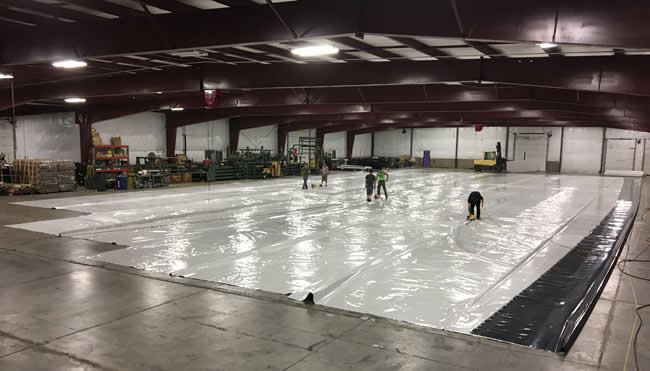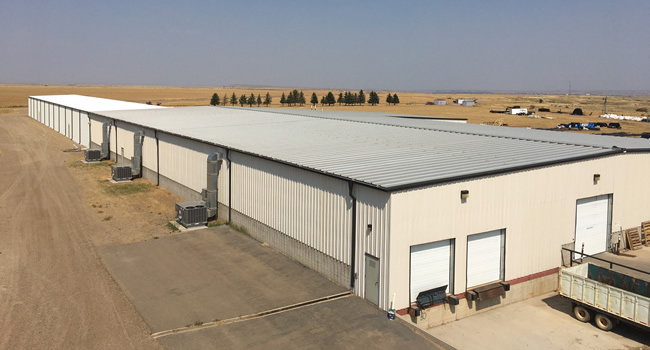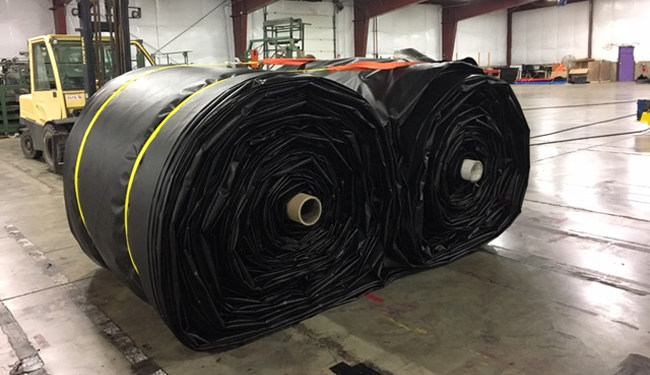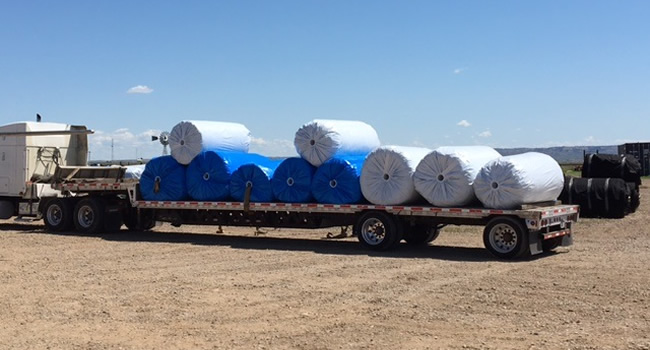When Brawler Industries closed its four locations in the United States, its assets were bought up by various geosynthetics entities. The one location we hadn’t heard about was what happened to the Miles City, Montana assets and inventory. They have certainly not sat idle. Instead, William Phair acquired the site and established a new geosynthetics fabrication company, Western ProLine, LLC, in March of this year.

While the identity is new, the fabrication facility capabilities are far greater than under the previous owner; and, Western ProLine is built upon significant experience. Its name even harkens back to the facility’s original business brand, Western Industries, which Phair’s father had built in the mid 1990s and later sold to Brawler.
William Phair now serves as Western ProLine’s president, providing not only new energy but carrying with him experience from years working for Western Industries and then Brawler in Montana and Texas.
WESTERN PROLINE CAPABILITIES & GROWTH
The opening moves for Western ProLine have been strong ones. Foremost, it has preserved its core geomembrane fabrication business in the oil and gas market, with a base of clients in Canada, North Dakota, Wyoming, Colorado, New Mexico, Texas, and Pennsylvania.
With the core business secured, Phair then expanded the fabrication facility capabilities with a 300-ft. expansion that enables Western ProLine to fabricate continuous seams up to 525 ft. The facility’s flexibility also allows the work floor to be divided into two simultaneous work zones so more client work can be serviced.

The expansion unites both the core business and the company’s future project capabilities.
“Because of the [oil and gas] industry shift in pit sizes—deeper wells, larger fracs, etc.—I decided to add an expansion,” Phair says. “The pits have been growing for years, but in this area it is not uncommon to see 300 x 500 ft. water pits.”
Phair has seen a lot of HDPE geomembrane in these larger pits, but with Western ProLine’s expanded fabrication capability he can now offer those oil and gas sites more affordable, large LLDPE panels in 30 and 40 mil. The 525-ft. continuous weld length is a draw.
“We currently have 45,000 square feet of workable space in our building.”
The materials that have made up most of the fabrication business have been LLDPE geomembranes, nonwoven geotextiles, and woven-coated polyethylene (WCPE). Typical thicknesses have ranged from 12 – 40mil in LLDPE and WCPE.
The company is also stocking 10 oz. and 8 oz. nonwoven geotextile regularly for roll stock distribution.
“The 30 mil LLDPE is the primary mover,” Phair says. “Most commonly for aboveground frac tanks. These liners range anywhere from 10,000 to 45,000 square feet and can weigh up to 6,500 lbs. The product we offer is a white/black material. The white is to be deployed face up so to reveal any surface abrasions (if repairs are needed) and reduce temperature build-up during installation.”

The 20-mil woven coated materials have also been in high demand, he notes. A number of reasons have helped the 20-mil WCPE market grow quickly:
- 20 mil WCPE is very lightweight, enabling larger single-piece liners. “One specific liner we built was a 375 x 375 ft.,” Phair says. “One piece, scroll-rolled to center.”
- 20 mil is very affordable. “It hits a sweet spot in the market for both suppliers and end users, regarding price,” Phair says. “Combined with its ease of fabrication, this is the product that we push the most.”
- 20 mil has broad application uses: rig pads, location liners, secondary containment, reserve pits, and even frac pits
AT HOME IN MONTANA
Prior to forming Western ProLine, Phair spent significant amounts of time in Texas building connections and geosynthetics fabrication business in that region’s large oil and gas market. In June 2016 he returned to Miles City, Montana to take over all of Brawler’s clients previously serviced from that location.
The location of the Montana facility is actually quite strategic to oil and gas work.

“Everything in this industry is based on lead times,” Phair says. “We have a great logistical advantage to many oil and gas hubs in this area. We are three hours from Williston, North Dakota and Gillette, Wyoming. We are four hours from the Canadian border. We are six hours from Greeley, Colorado.”
Though Brawler’s business was in decline as 2016 progressed and many layoffs—include Phair’s—occurred by November, he was ready to enter into acquisition quickly. By February 2017, the details were sorted out and the assets and inventory were secured. He officially formed Western ProLine.
“I knew that with the right suppliers and running a tight ship, I would be able to operate out of this facility and be profitable,” Phair says. “I had a number of employees already lined up that were let-go from Brawler and had a lot of experience in the plastic business. My main focus is to service the customers in our area to the standards they should come to expect.”
If the early moves are any indication, the company is doing just that.
It’s a good story from a side of the industry—fabrication—that isn’t spoken of too often but which has tremendous impact on project execution and economy.
Learn more at http://westernproline.com.











